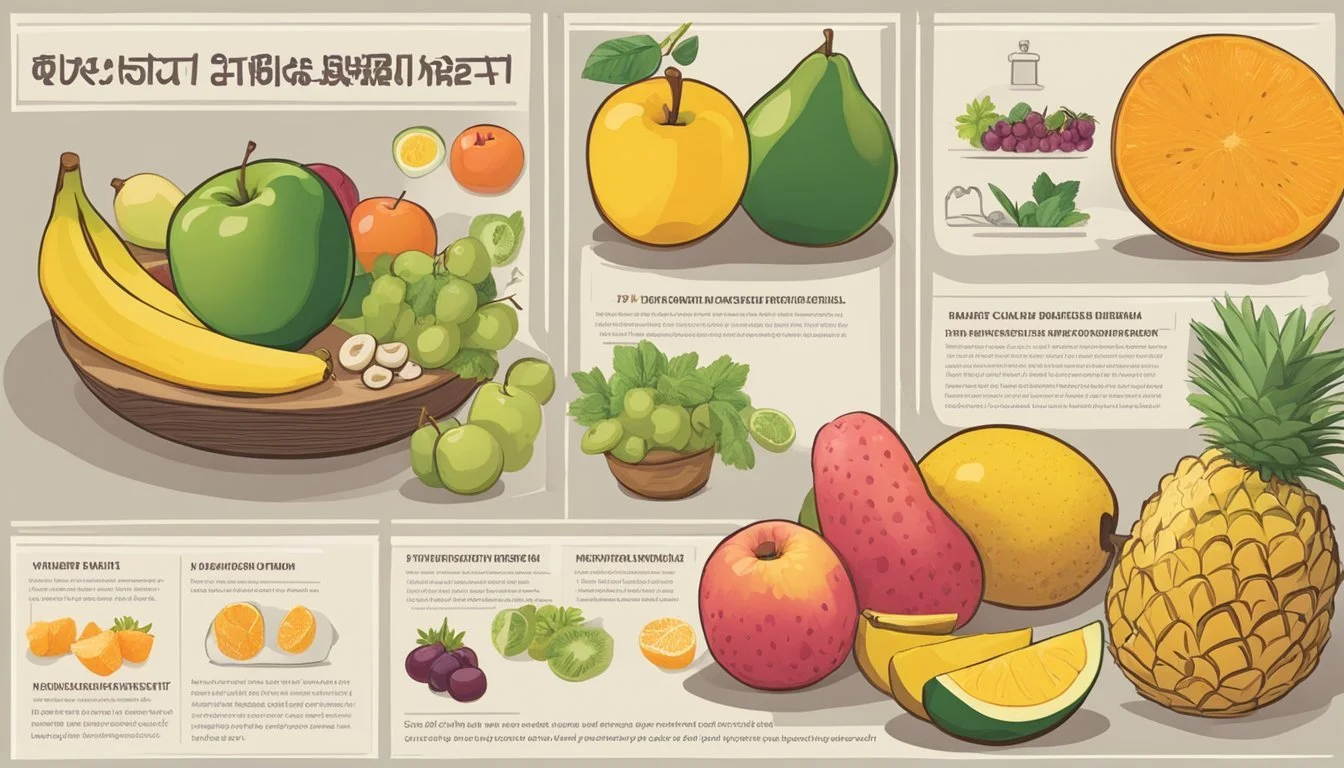Can Diabetics Eat Rambai?
Exploring Dietary Considerations
Rambai, a lesser-known tropical fruit, has piqued the curiosity of many, especially those managing diabetes. This small, grape-like fruit offers a unique flavor, but its suitability for a diabetic diet raises important questions. Diabetics can enjoy Rambai in moderation, as it is low in calories and has a moderate glycemic index, which helps in preventing rapid spikes in blood sugar levels.
For individuals with diabetes, monitoring carbohydrate intake is crucial to maintaining balanced glucose levels. Rambai provides a natural option that fits within these dietary considerations. Additionally, it is rich in vitamins and antioxidants, supporting overall health without compromising blood sugar control. The key lies in portion control and balancing it with other low-carb foods in the diet.
Understanding the impact of Rambai on blood sugar can empower diabetics to make informed dietary choices. This fruit’s potential benefits make it worth exploring, adding variety and nutrition to a well-managed diabetic meal plan. Dive into more details to see how Rambai can fit into your journey towards better health while living with diabetes.
Understanding Diabetes and Diet
Diet plays a crucial role in managing diabetes by helping regulate blood sugar levels and maintain a healthy weight. It involves careful planning of carbohydrate intake, balancing nutrients, and avoiding foods that cause spikes in glucose.
The Role of Diet in Diabetes Management
Diet directly influences blood sugar levels. For individuals with diabetes, monitoring carbohydrate intake is essential because carbs convert into glucose during digestion. Consuming foods with a low glycemic index helps in maintaining stable blood sugar levels.
A healthy diet for diabetics includes non-starchy vegetables, lean proteins, and healthy fats, which support heart health. Regular meal timing aids in controlling insulin levels effectively. Incorporating fiber-rich foods such as whole grains, fruits, and vegetables is also beneficial in managing blood sugar.
Key Dietary Considerations for Diabetics
Diabetics should focus on foods with a low glycemic index. Foods high in fiber slow down glucose absorption, helping control blood sugar levels. It's important to choose lean protein sources like poultry, fish, and plant-based proteins to manage cholesterol and heart disease risk.
Portion control is critical to avoid excessive calorie intake, which can lead to obesity, increasing insulin resistance. Watching sodium and unhealthy fat intake helps in managing blood pressure and maintaining heart health. Consulting with a registered dietitian can provide personalized guidance based on individual health goals and lifestyle preferences.
Nutritional Profile of Rambai
Rambai is a fruit that packs a variety of essential nutrients beneficial for overall health. It offers a balanced profile of macronutrients and is rich in vitamins and minerals.
Macronutrients in Rambai
Rambai is low in calories, making it a suitable option for those who need to monitor their caloric intake. The fruit approximates 19 grams in weight, with roughly 12 grams of fruit flesh.
Rambai contains a modest amount of protein and fat, which are required for various bodily functions. It is also notable for its fiber content, aiding in digestive health. Despite its sweet taste, Rambai's sugar levels are within a range that can be managed in a diabetic diet under medical advice.
Vitamins and Minerals Present in Rambai
Rambai is an excellent source of vitamin C, which supports the immune system. The fruit also contains significant amounts of potassium, magnesium, calcium, and vitamin B2 (riboflavin), all contributing to overall health.
Phosphorus is another key mineral found in Rambai, playing a vital role in maintaining healthy bones and teeth. Additionally, the antioxidants present in the fruit help to combat oxidative stress, which is particularly beneficial for managing chronic conditions like diabetes.
Rambai in a Diabetic Diet
Rambai, a fruit commonly found in Southeast Asia, has numerous nutritional benefits that could support a diabetic diet. Key areas of focus include its impact on blood sugar levels and practical ways to incorporate it into meals.
Blood Sugar Impact of Rambai
Rambai has a moderate glycemic index (GI) score, making it a fruit diabetics can consider but with attention to portion size. Its fiber content helps slow down the absorption of sugars into the bloodstream, minimizing sudden spikes in blood sugar levels.
Compared to high-GI fruits, rambai provides a steadier source of energy. However, it is still important to monitor how your blood sugar responds after consuming it. Always pair Rambai with other low-GI foods to balance your meal.
Incorporating Rambai into Meals
Rambai can be a versatile addition to diabetics' meals. For breakfast, consider adding slices of rambai to a bowl of unsweetened yogurt, providing a mix of healthy fats and proteins. This combination helps regulate blood sugar throughout the morning.
For lunch, a salad with leafy greens, grilled chicken, and diced rambai can offer a fresh and satisfying option. The fruit's natural sweetness complements the savory elements and adds nutritional variety.
Keep portion sizes in check to avoid excess carbs and calories. Integrating rambai this way maintains balanced blood sugar levels while enjoying its unique flavor.
Pros and Cons of Eating Rambai for Diabetics
Rambai, a fruit commonly found in South-East Asia, offers potential benefits and risks for people with diabetes. This section will explore how rambai can impact blood sugar control and the considerations diabetics should keep in mind.
Benefits of Rambai for Blood Sugar Control
Eating rambai may have positive effects on blood sugar levels due to its potential nutrient content. Rambai contains fiber, which can slow down the absorption of glucose, helping to prevent sudden sugar spikes. Fiber-rich diets have been shown to improve blood sugar levels and overall diabetes management.
The fruit is also a natural source of antioxidants and other phytochemicals, which can reduce inflammation and protect against complications often associated with diabetes. Including rambai in the diet may provide these benefits while also offering a sweet, natural alternative to processed sugars and snacks.
Possible Risks and Considerations
Despite its benefits, diabetics should be cautious when consuming rambai. The fruit contains natural sugars, which can still impact blood sugar levels. Monitoring portion size is essential to avoid potential increases in blood sugar.
Another consideration is the need to incorporate rambai into a balanced diet. While it offers some health benefits, it should not replace other nutrient-dense foods like nuts, seeds, and vegetables that are crucial for a diabetic-friendly diet. Always consult with a healthcare provider before making significant dietary changes, especially when managing diabetes.
Alternative Foods for Diabetics
People with diabetes can benefit from choosing foods that help manage blood sugar levels effectively. The following sections explore optimal fruit alternatives with lower sugar content and non-fruit options suitable for a diabetic diet.
Fruit Alternatives with Lower Sugar Content
Berries: Blueberries, strawberries, and raspberries are rich in fiber and have a lower glycemic index. They can be enjoyed fresh or as a topping for yogurt.
Apples: When eaten with the skin, apples provide fiber that can slow down the absorption of sugar and manage blood glucose levels better.
Pears: Similar to apples, pears with their skin on provide fiber. They are a sweet yet low-glycemic index option suitable for diabetics.
Cherries: With a lower glycemic index compared to many other fruits, cherries offer antioxidants and fiber, making them a good snack option.
Non-Fruit Options Suitable for Diabetics
Nuts and Seeds: Almonds, chia seeds, and flaxseeds offer protein, fiber, and healthy fats. They help stabilize blood sugar levels and make a satisfying snack.
Whole Grains: Foods like quinoa, barley, and oats are excellent for maintaining stable blood glucose due to their high fiber content.
Vegetables: Non-starchy vegetables such as broccoli, spinach, and bell peppers provide essential nutrients without causing spikes in blood sugar. They can be consumed raw, steamed, or in salads.
Legumes: Beans and lentils are high in fiber and protein. They help keep blood sugar levels in check and are versatile in various dishes.
Fish: Fatty fish like salmon and mackerel are high in omega-3 fatty acids, which offer cardiovascular benefits and support overall health. They can be grilled, baked, or sautéed for a healthy meal.
Olive Oil: A healthy fat source, olive oil can be used in cooking or as a salad dressing. It has beneficial effects on heart health without impacting blood sugar levels significantly.
Consulting with Healthcare Providers
When it comes to managing diabetes, seeking guidance from healthcare providers is crucial. They can offer specific recommendations to help maintain balanced blood sugar levels, tailor dietary plans, and address potential complications such as cardiovascular disease.
When to Talk to a Dietitian
A dietitian provides invaluable help in managing diabetes through detailed meal planning. Key times to consult include:
Upon diagnosis
When experiencing blood sugar spikes
If aiming for weight loss
They offer personalized strategies to accommodate preferences, ensuring a balanced intake of proteins, carbohydrates, and fats. This becomes particularly important if considering the integration of less common fruits like Rambai. Their expertise helps navigate dietary adjustments that align with A1C targets, promoting a healthy diet to minimize heart health risks.
Personalizing Your Diabetic Diet
A dietitian can help tailor a diabetic diet to fit individual needs and health goals. Considerations include:
Overall calorie requirements
Preferences for certain food groups
Managing specific medical conditions
Such personalized plans support better blood sugar control and reduce the risk of cardiovascular disease. Incorporating a variety of nutritious foods ensures adequate nutrient intake without sacrificing taste or enjoyment. They also advise on portion sizes, meal frequency, and the inclusion of fruits that do not significantly impact glucose levels, maintaining both health and satisfaction in the diet.








